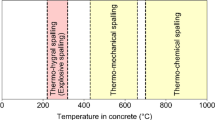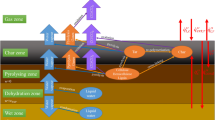Abstract
Despite the many characteristics of coal relating to its use as blast-furnace fuel, few characteristics have been proposed to predict the productivity of the furnace and its coke consumption. Drum tests of coke permit ample assessment of its ability to withstand mechanical loads (in particular, abrasive and impact forces). At the same time, models of coke failure in the blast furnace indicate that the crushing forces on the coke play an important role. Thanks to those forces, the mean piece size of the coke declines as it falls though the furnace. The method used to determine the coke’s ability to withstand abrasive and impact forces has been codified in GOST State Standards (in terms of the strength indices M 25, M 40, and M 10). However, there is no standard method for assessing the ability of the coke to withstand crushing forces. To address that deficiency, a compact system for determination of the coke’s ability to withstand crushing forces is proposed: it consists of a press for the creation of compressive forces; a matrix with a punch in which the coke sample may be placed; and an instrument for measuring the compressive force (the crushing force). Values of the compressive strength determined using the new system are presented for various coke samples.
Similar content being viewed by others
References
Ukhmylova, G.S., The requirements of European blast furnace workers to the quality of coke, Koks Khim., 2001, no. 4, pp. 24–26.
Ukhmylova, G.S., Problems of production of highquality coke for blast furnaces, Chern. Metall., 2004, suppl., p.40.
Vegman, E.F., Domennoe proizvodstvo: spravochnik (Blast Furnace Production: Handbook), Moscow: Metallurgiya, 1989, vol.1.
Ivanov, E.B. and Muchnik, D.A., Tekhnologiya proizvodstva koksa (Coke Production Technology), Kiev: Vishcha Shkola, 1976.
Muchnik, D.A, Formirovanie svoistv domennogo koksa (Formation of the Properties of Blast-Furnace Coke), Moscow: Metallurgiya, 1983.
Muchnik, D.A. and Gulyaev, V.M., Identification of coke quality estimates by various methods of “cold” destruction, Koks Khim., 2006, no. 1, pp. 17–21.
Sklyar, M.G. and Dang, V.H., Complex evaluation of coke properties as the blast furnace fuel, Koks Khim., 1990, no. 6, pp. 48–51.
Semisalov, L.P., Sytenko, I.V., Kuznichenko, V.M., et al., Transformation of coke properties in the blast furnace processes, Nauch. Tr. Ukr. Gos. Nauchno-Issled. Uglekhim. Inst., 1971, no. 23, pp. 25–28.
Semisalov, L.P., Analysis of coke properties and change during blast furnace processing, Cand. Sci. (Tech.) Dissertation, Kharkov, 1980.
Toryanik, E.I., Gaidaenko, A.S., Podlubnyi, A.V., Tkalich, G.M., and Vovk, R.A., Coke sorting at PAO Zaporozhkoks, Coke Chem., 2016, vol. 59, no. 1, pp. 14–22.
Zhuravskii, A.A., Complex evaluation of coke strength affected by crushing loads at the high temperatures, Cand. Sci. (Tech.) Dissertation, Kharkov, 2005.
Gaidaenko, A.S., Podlubnyi, A.V., Vovk, R.A., Toryanik, E.I., Zhuravskii, A.A., and Kubrak, S.S., UA Patent 104178, Byull. Izobret., 2016, no. 1.
Author information
Authors and Affiliations
Corresponding author
About this article
Cite this article
Toryanik, E.I., Gryzlov, A.V., Zhuravsky, A.A. et al. Determining the strength of coke under crushing forces. Coke Chem. 60, 102–107 (2017). https://doi.org/10.3103/S1068364X17030061
Received:
Published:
Issue Date:
DOI: https://doi.org/10.3103/S1068364X17030061




